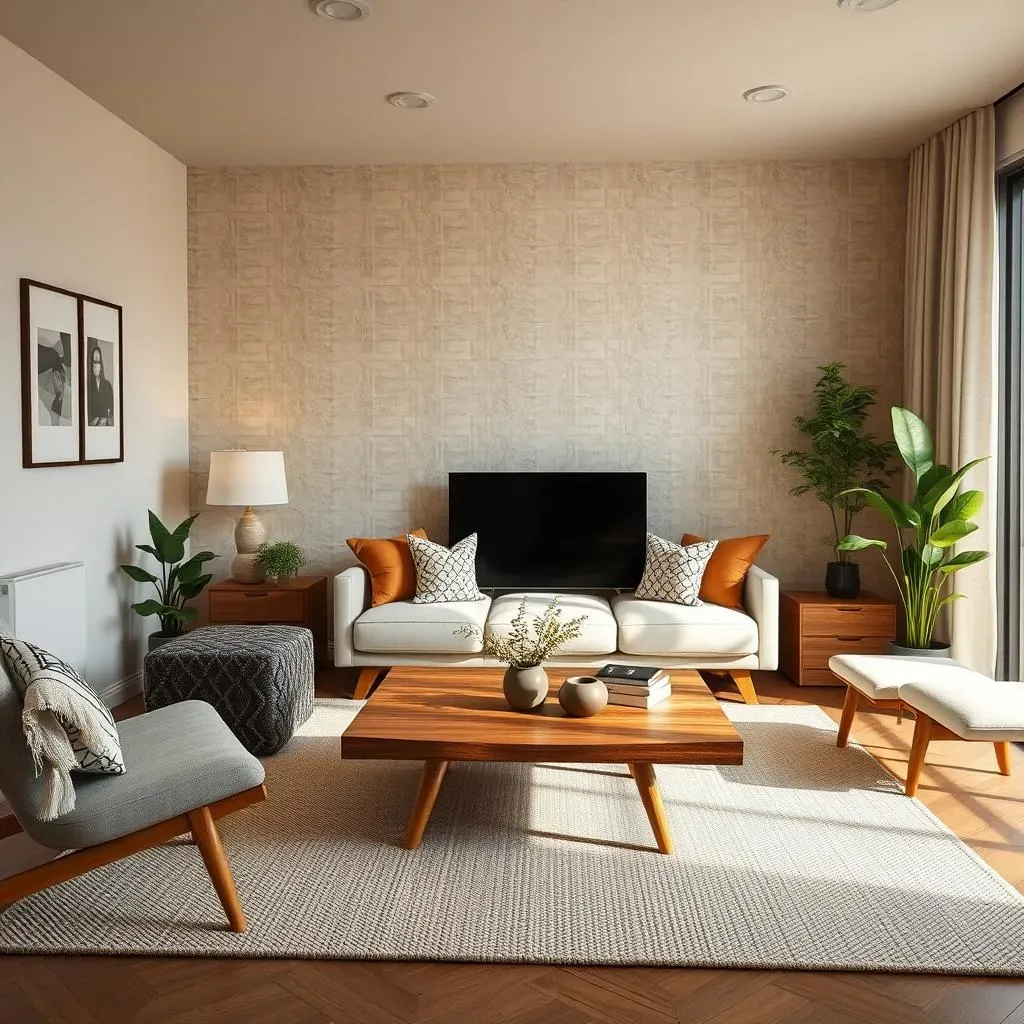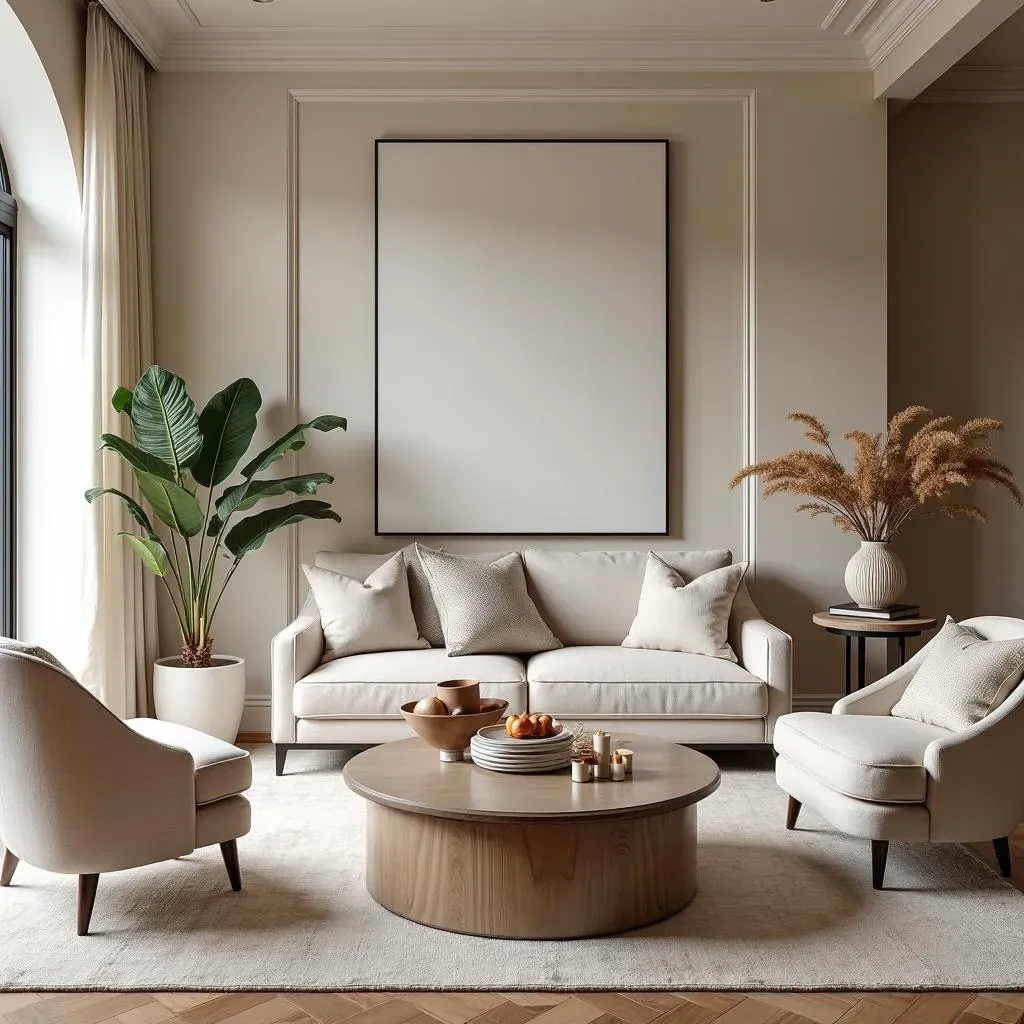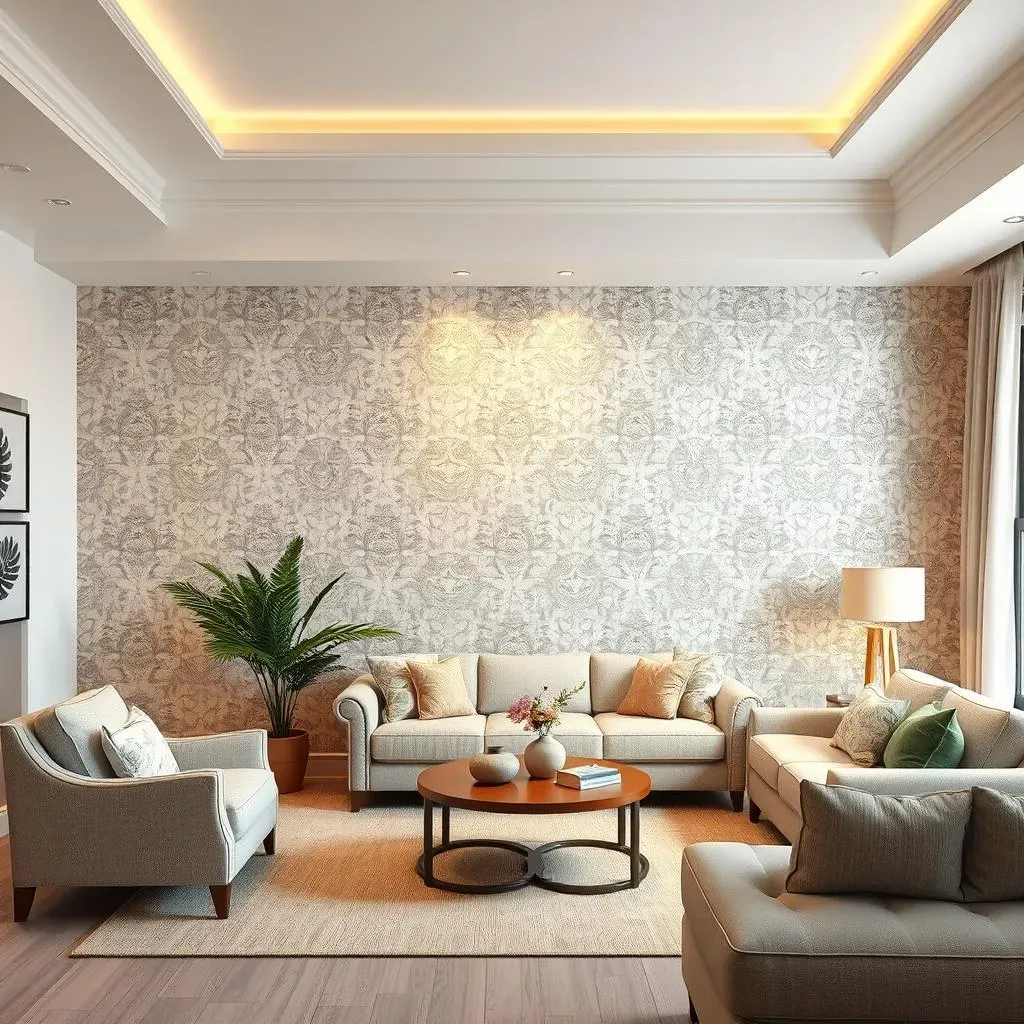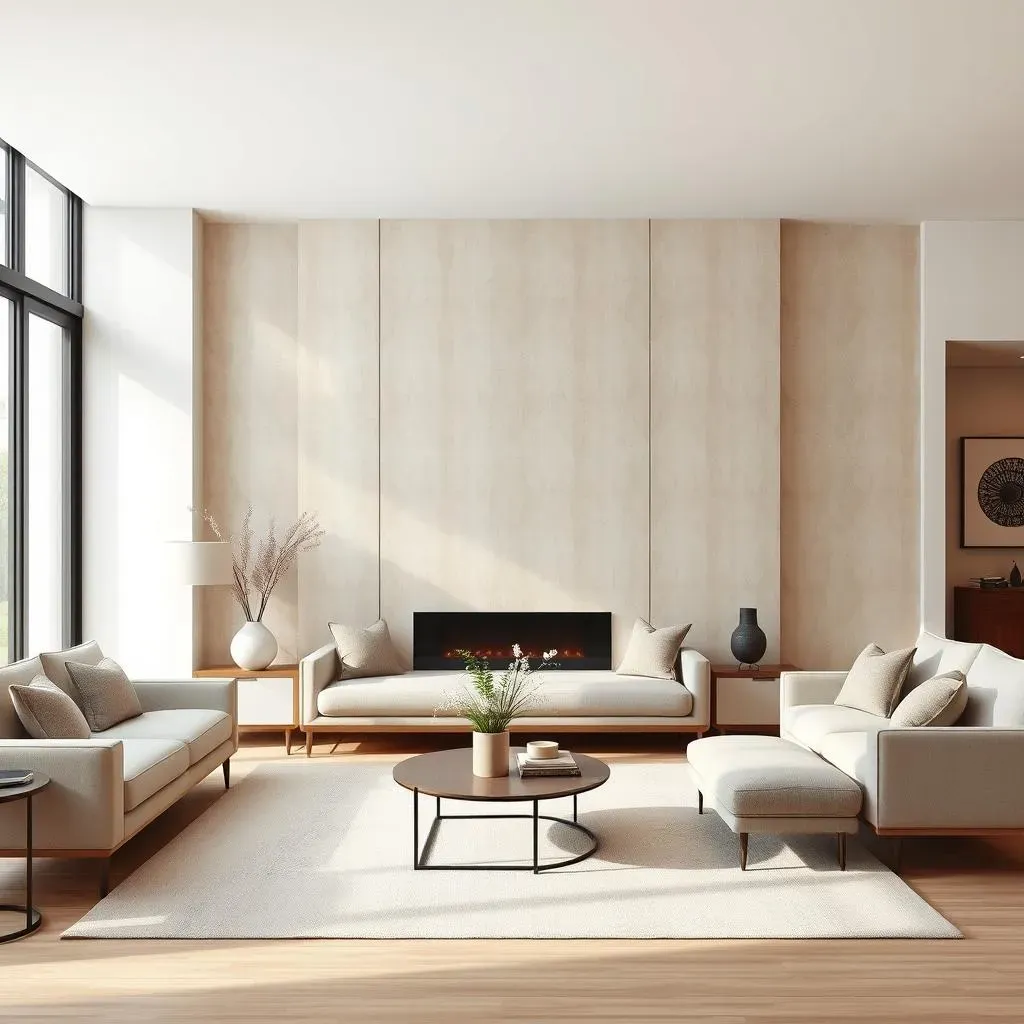Table of Contents
Ready to give your home a stylish upgrade without the drama? Then you're in the right place! This article is your ultimate guide to the magic of "neutral wallpaper accent wall ideas." We'll explore how to choose the perfect neutral wallpaper to complement your existing décor, transforming a single wall into a stunning focal point. Forget overwhelming patterns and bold colors; we'll show you how subtle shades and textures can create depth and sophistication. From calming bedrooms to vibrant living rooms, we'll delve into room-specific design ideas, offering practical tips and inspiration along the way. Learn how to seamlessly integrate your chosen wallpaper into your existing space, avoiding common pitfalls and embracing clever design hacks. Whether you're a seasoned DIY enthusiast or a complete beginner, this guide will empower you to create a stunning accent wall that reflects your personal style and elevates your home's aesthetic. Get ready to discover the transformative power of a neutral wallpaper accent wall!
Choosing the Perfect Neutral Wallpaper

Choosing the Perfect Neutral Wallpaper
Picking the perfect neutral wallpaper is like choosing the perfect outfit – it needs to flatter your existing style and make you feel amazing! Think about your room's existing colors and furniture. Do you have a lot of wood? A textured wallpaper, like those shown in our textured wallpaper ideas, might be a great fit. If your furniture is sleek and modern, a geometric pattern might be the perfect complement. Check out our geometric wallpaper ideas for inspiration.
Room | Wallpaper Style Suggestion |
|---|---|
Bedroom | Subtle floral or a calming textured design |
Living Room | Geometric, patterned, or a bold textured design |
Kitchen | Simple, washable design with a subtle pattern |
Consider the lighting in the room too. A dark room might benefit from a lighter wallpaper to brighten things up, while a bright space could handle a slightly darker shade. Don't forget about the scale of the pattern! Large patterns can make a small room feel smaller, so for smaller rooms, stick to smaller, more delicate patterns or even a solid neutral color.
- Consider the overall mood you want to create.
- Think about the existing color palette in the room.
- Choose a wallpaper that complements, not clashes, with your furniture.
And don't feel limited to just beige and gray! There's a whole world of beautiful neutrals out there – think soft greens, warm creams, or even muted blues. For more ideas on specific room styles, you might enjoy our guides on living room wallpaper and bedroom wallpaper. Experiment with different shades and textures to find the perfect match for your home.
Styling Your Neutral Accent Wall: RoombyRoom Ideas

Styling Your Neutral Accent Wall: RoombyRoom Ideas
Living Room Luxury
Let's talk living rooms! This is often the heart of the home, so you want a wallpaper that's both stylish and inviting. A subtly patterned wallpaper can add a touch of elegance without being overwhelming. Think about a soft geometric design or a delicate floral print. For a more modern feel, consider a textured wallpaper that adds depth and visual interest. Check out our living room wallpaper ideas for some seriously inspiring options. Remember to consider your sofa's color and style; your wallpaper should complement, not compete!
Adding pops of color with cushions or throws can make the neutral wallpaper really sing. A warm cream or a soft gray can work beautifully in most living rooms, providing a calming backdrop that lets your furniture take center stage. If you have a large living room, you could even be bold with a large-scale pattern – but in a smaller space, keep it subtle to avoid making the room feel cramped.
- Consider the size of your living room.
- Choose a pattern that complements your furniture style.
- Don't be afraid to add pops of color with accessories.
Bedroom Bliss
Your bedroom should be your sanctuary, a space for relaxation and tranquility. For this reason, you want a neutral wallpaper that promotes peace and calm. Subtle textures, like linen or grasscloth, can create a luxurious and inviting feel. Or, consider a soft, muted floral pattern for a touch of romance. If you prefer a more minimalist look, a simple textured wallpaper in a calming neutral shade will do the trick.
Remember, your bedroom wallpaper doesn't have to be boring! Even subtle patterns and textures can add personality and charm. Consider the lighting in your bedroom; a light and airy room might benefit from a slightly darker shade, while a dark room might be better suited to lighter, brighter tones. For more inspiration, check out our dedicated page on bedroom wallpaper ideas.
Wallpaper Type | Mood | Best For |
|---|---|---|
Textured | Calming, luxurious | Master bedroom, guest room |
Subtle Floral | Romantic, feminine | Master bedroom |
Solid Neutral | Minimalist, modern | Any bedroom |
Practical Tips and Considerations for a Stunning Accent Wall

Practical Tips and Considerations for a Stunning Accent Wall
Prep Work is Key
Before you even think about pasting that gorgeous wallpaper, proper preparation is essential! Start by cleaning the wall thoroughly. This removes any dust, dirt, or grease that could interfere with the wallpaper's adhesion. A clean surface ensures a smooth application and prevents peeling or bubbling later on. Next, make sure your wall is smooth. Fill any holes or cracks with spackle and sand them down for a flawless finish. This step is crucial, especially if you're using a delicate or patterned wallpaper. For more inspiration on different types of wallpaper, check out our guide to patterned wallpaper ideas – they’re stunning!
Measuring is also super important! Before you start, carefully measure the wall to determine how much wallpaper you need. It's always better to buy a little extra than to run short mid-project. And don't forget to account for pattern matching; some patterns require more material than others. Finally, gather all your tools: a measuring tape, a sharp utility knife, a smoothing tool, a bucket of water, and paste, of course! Having everything ready will make the whole process much smoother and less stressful. Consider using removable wallpaper for an easier installation and potential future changes. See our removable wallpaper ideas for options.
- Clean the wall thoroughly.
- Repair any imperfections.
- Measure carefully to avoid shortages.
- Gather all necessary tools.
Wallpapering Like a Pro
Now for the fun part – actually putting up the wallpaper! Start by applying the wallpaper paste according to the manufacturer's instructions. This step is crucial for proper adhesion. Carefully align the first strip of wallpaper, ensuring it's straight and level. Use a smoothing tool to remove any air bubbles and ensure a smooth, wrinkle-free finish. Work your way across the wall, carefully matching the pattern as you go. Take your time and be patient; rushing can lead to mistakes. Trim any excess wallpaper with a sharp utility knife. If you're working with a complex pattern, consider using a pencil to lightly mark the wall to ensure accurate pattern matching.
Once the wallpaper is up, step back and admire your handiwork! If you've made any mistakes, don't panic. Many wallpapers can be carefully peeled off and reapplied, especially if you've used a removable option. But prevention is always better than cure, so take your time and be meticulous during the application process. Finally, step back and admire your beautiful new accent wall! For more specific room application ideas, explore our guides on kitchen wallpaper or office wallpaper for tailored advice.
Step | Tip |
|---|---|
Applying Paste | Follow manufacturer instructions carefully. |
Aligning Wallpaper | Use a level to ensure straight lines. |
Smoothing | Work out air bubbles gently. |
Trimming | Use a sharp blade for clean cuts. |
